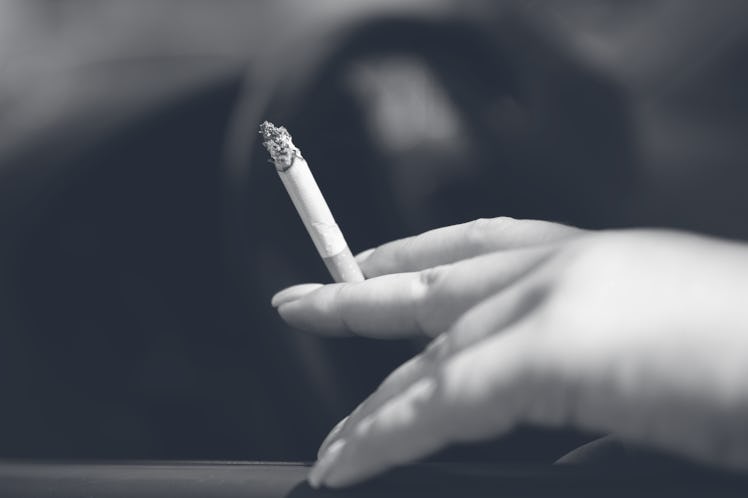The First State Just Banned Smoking When Kids Are In The Car. It Shouldn’t Be The Last
A new law in Delaware bans smoking when kids are in the vehicle. It’s a good start.

Everyone knows that smoking is bad for you, and that secondhand smoke is about just as dangerous as smoking itself. For those of us who grew up in the 1980s, chances are that you grew up in a cloud of cigarette smoke — in the house, in your parent’s car, in restaurants. Though we’ve moved past the days of smoking inside businesses, smoking outside or in our cars has long been up to us — until recently, at least in one state.
In September, Delaware Governor John Carney signed a bill into law that outlaws smoking in a car if a minor is present in the vehicle. The law includes cigarettes, vapes, and cigars. The law is a huge step forward in protecting kids from the harms of secondhand smoke, a well-known carcinogen that can lead to a host of other health problems — coronary heart disease, stroke, respiratory issues, and reproductive concerns in adults, and ear infections, respiratory infections and asthma in kids. Babies and young children are also seriously harmed by secondhand smoke. Secondhand smoke exposure raises a baby’s risk for SIDS. According to the CDC, there is no safe level of secondhand smoke exposure.
But secondhand smoke exposure comes in many forms — and the smoker need not be present to hurt the kid. Parents who smoke might think it’s okay to smoke in the car when the kids aren’t present, but that’s not the case. Secondhand smoke lingers. The smell might be gone, and you may not smoke around your kids, but that doesn’t mean the air is safe. That’s because when you smoke, thousands of chemicals from smoke — like tar, lead, and other harmful compounds — build up on surfaces and in fabrics. These compounds can be re-released into the air long after the cigarette is extinguished and the Febreze is sprayed, resulting in exposure to toxins.
And it’s not just surface buildup of chemicals that are a concern. One 2014 study found that the fine particulate matter in cigarette smoke can take almost two hours to decrease to safe levels. A separate study found that fine particulate matter in smokers’ homes is up to ten times greater than in non-smoking homes.
Smoking in cars is a different beast than smoking in a home, though. Due to decreased size and less efficient ventilation, the concentration of secondhand smoke in a vehicle is greater than in bars or smoker’s homes. And even with the window down in a moving car, secondhand smoke concentrations can be nearly ten times higher than safe levels. In a well-ventilated home, secondhand smoke contaminants can linger for up to five hours. In cars, where ventilation is less efficient and the space more confined, the risks are increased. Plus, a much tighter space means less surface area for the chemicals of secondhand smoke to build up — making the car a potentially toxic hazard.
While we slowly inch closer to a tobacco-free world, if you smoke, smoke outside, away from kids, pets, and non-smokers.